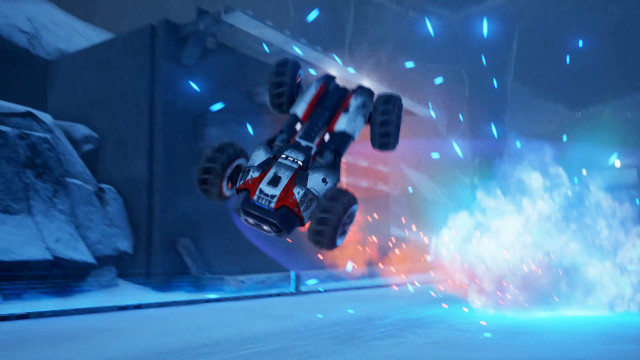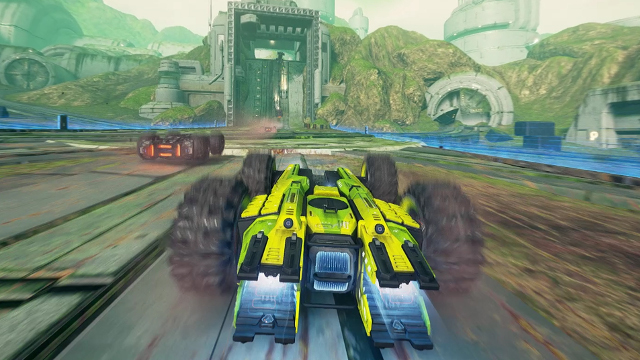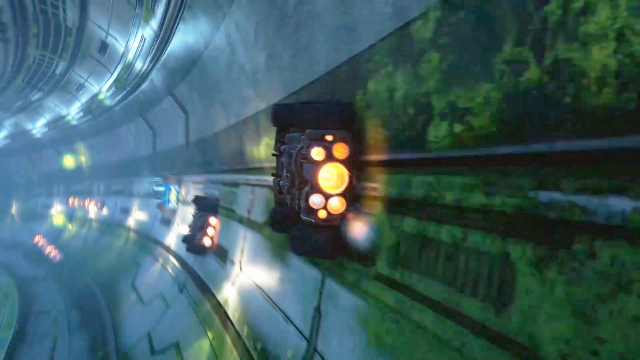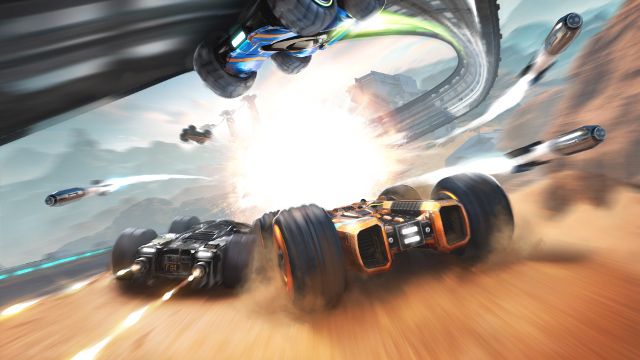As the scale of console games continues to grow, so do our expectations for the depth of their content.
It is not uncommon to spend dozens, if not hundreds, of hours scouring the latest RPG, and many fans of multi-player gaming expect their first-person shooters, MMOs, and battle royales to provide nearly endless entertainment.
The racing game is certainly not exempt from this expectation.
At the beginning of October, Microsoft released Forza Horizon 4, an open-world racing simulator, and it is the perfect reflection of this current paradigm as it is applied to the racer. Featuring hundreds of cars, a dynamic weather system that alters gameplay, and a player-driven route creator, Forza 4 is massive and the fastest-selling game in franchise history.
But what about the racing simulator’s stripped-down brother, the arcade racer? While franchises like F-Zero and Wipeout are revered for their adrenaline-pumping action, they are not exactly known for their depth of content.
Can a game with the goal of minimizing everything but the heart-racing thrills that come with driving at insane speeds thrive in a landscape where developers answer fans’ resounding call of “more, more, more”?
Grip: Combat Racing, a spiritual-successor to 1999’s Rollcage, says “Yes,” and it is extremely generous with the features and content it provides.
However, after spending some time with Grip, I wonder how much of this throwback anyone actually needs.

Grip is a fast-and-furious arcade racer that lets players drive up walls and fly across ceilings, all while launching missiles and firing gatling guns at their adversaries. It is a a jacked up Mario Kart in a futuristic setting, and before starting Grip, the classic Mario Kart 64 was likely the last racing games I spent any significant time with.
After jumping into Grip‘s mammoth campaign mode (which can provide hours of predefined playlists spanning a majority of the game modes available), and crossing the finish line last in the first handful of races I joined, I feared that my time away from the genre had ruined me. Had I found my video game kryptonite?
Fortunately, Grip never made me feel inadequate. On the contrary, the game continually rewarded me with additional vehicles and cosmetics (through its XP-based unlocking system), and the campaign continued to advance, keeping me engaged as it introduced new tracks, game modes, and weapon types.
There are 23 race tracks (which can be played mirrored), 5 combat arenas, and a bevy of unlockable vehicles and customization in Grip, and the game was not going to let me miss its vast array of content just because I was bad at it.
This generosity made my time learning Grip‘s mechanics not only palpable, but fun (despite all of the losing that I was doing). While I certainly wanted to improve my racing prowess, active progression kept me playing even when I was at my worst. Soon enough, I was bringing home the gold and slaying foes in the battle arena.
If all advancement had been locked until I was winning races, I am not confident that I would have lasted long enough to ever be able to do so, and it is a boon that Grip is careful not to alienate a neophyte like myself.
It is important to note that some success on the track is required to proceed to the end of Tier 3 of the campaign, but Grip builds gradually, and what it requires of you never feels out of reach.

Regarding the gameplay, there are two primary ways to play: racing and arena.
Within the category of racing, there are several types that vary from straightforward non-combat races to those that consider weapon damage when determining your final position. This variety is appreciated, as it gives players a chance to find a racing type that they are suited for. Struggling with the Speed Demon races? Perhaps you will find your legs in the Ultimate Race.
The races themselves are exciting, and I often have a head rush after a play session. However, they operate on a very small margin, especially at the higher difficulties. You always feel one error away from last place and one well placed missile away from first. The exception is the Ultimate Race, where combat damage matters, and you can find yourself in the middle of the pack even with subpar lap times.
Living on the razor’s edge can be exhilarating, and it is a large part of why Grip‘s gameplay is so addictive – “If only I had not missed that boost,” I say to myself as I fire up the race again, looking for a better finish.
That said, it often leads to feel-bad moments where a late-race crash takes you from first place to last. I find myself frustrated and restarting races often, though the fact that Grip can keep me repeating “one more time” after so many failed attempts is a testament to the success of its gameplay.
However, there is a shortcoming in Grip‘s gameplay, and it is often the culprit for these race-ending crashes: its unintuitive aerial handling. The easiest way to put yourself completely out of a race is to get stuck against a track’s terrain following a big jump, and it is even preferable to go out-of-bounds and get reset on the track. As a result, my strategy is to avoid aerial maneuvering as much as possible.
This is a major misstep for a game attempting to provide a gravity-defying experience, and it is Grip‘s biggest failing.
The other category, arena, does not suffer from these problems. This is an all-out battle in an enclosed space where winners are decided exclusively by damage dealt. Driving prowess means little, and, as a result, it is the game type I am best at.
Unfortunately, it is the least fun. Simply, the default timer is too long, and instead of engaging in frenetic combat, I am often looking at the clock, waiting for the minutes to tick away.
This is an apt distillation of the problem at the core of Grip — while it it is packed to the gills with content, I am not certain that an arcade racer needs to offer endless play. For fans that cannot get enough of speeding around tracks and blowing up vehicles, Grip can easily supply hours and hours of gameplay through its massive campaign and robust single and multi-player options (which allow full customization of all of the game modes). For the rest, the novelty of the gameplay may wain quickly.

Instead of the glut of content Grip provides, the game would be served much better by addressing the non-gameplay aspect that is holding it back: the lifelessness of its assets.
While the tracks are serviceable, they are bland. The garage provides an array of vehicles and customization, but none of it feels particularly exciting.
Grip is indeed intended to be a throwback to a bygone era of arcade racing, but its aesthetic feels trapped in the games it references. While this is not a question of fidelity, as the audio/visual components feel quite clean and sharp, I would be hard pressed to offer my favorite track or vehicle, as none stands out in particular. This drabness is further solidified by the stock drum and bass that comprise Grip‘s soundtrack.
Here is where the genre has an opportunity to enter the modern age, with mesmerizing visuals that transport you to a future of combat racing and a blistering soundtrack to match the ridiculously high-speed competitions you are engaged in. Unfortunately, Grip is not quite able to find a style that is compelling enough to elevate it.
All-in-all, I have had fun with my time in Grip, and I appreciate just how much it offers. But, unless you can only find joy when ramming another vehicle at 400 miles-per-hour, it is hard to imagine it being much more than a passing distraction.
[Note: Writer was grated a copy of the game from the publisher.]










Published: Nov 9, 2018 02:11 am